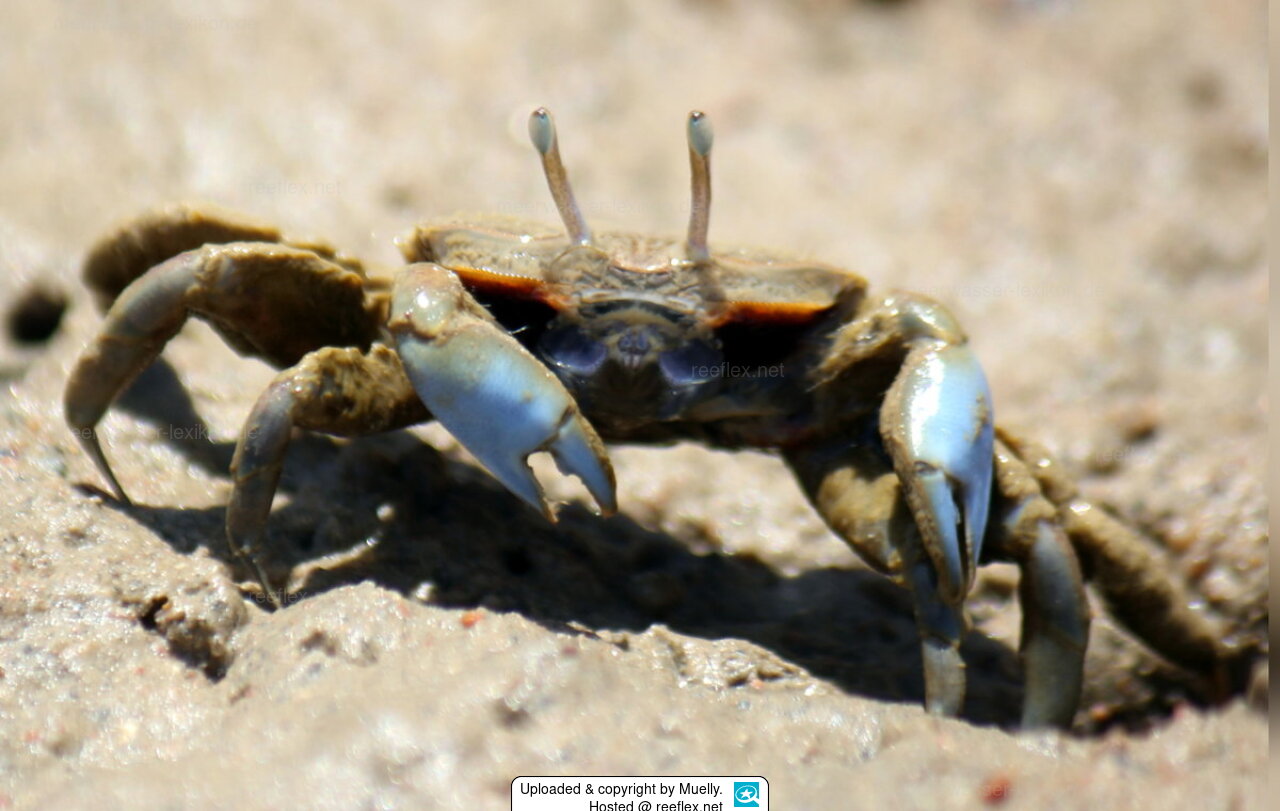Info
Macrophthalmus (Mareotis) depressus Rüppell, 1830
The carapace is moderately wider than long, has a narrow front and deep furrows and is covered with tiny grains. Its lateral edge has three different teeth, the first in the front side angle is blunt and square cut, the second is the largest and the third is very weak and only indicated by a few grains.
The eyes sit on narrow eyestalks. The scissors are almost the same size. In males, the chelae have finely granulated edges and the inner surface of the palm and finger is densely covered with thick bristles, but the outer surface is smooth. The strong and medium-sized walking legs are also covered with dense bristles, especially at the edges. The coloration of the carapace is bluish-gray on the back, while the underside, especially around the mouth, is yellow.
These crabs live in the intertidal zone, the area between high and low tide marks, on sandy and particularly muddy beaches and in mangrove areas. They are common throughout their range and are even typical of the lower intertidal zone of mudcoasts. The crabs live in burrows and emerge at low tide to feed on small particles of organic matter washed up by the water and were deposited on the ground.
Synonymised names:
Macrophthalmus affinis Guérin-Méneville, 1838 · unaccepted > junior subjective synonym
Macrophthalmus depressus Rüppell, 1830 · unaccepted > superseded combination
The carapace is moderately wider than long, has a narrow front and deep furrows and is covered with tiny grains. Its lateral edge has three different teeth, the first in the front side angle is blunt and square cut, the second is the largest and the third is very weak and only indicated by a few grains.
The eyes sit on narrow eyestalks. The scissors are almost the same size. In males, the chelae have finely granulated edges and the inner surface of the palm and finger is densely covered with thick bristles, but the outer surface is smooth. The strong and medium-sized walking legs are also covered with dense bristles, especially at the edges. The coloration of the carapace is bluish-gray on the back, while the underside, especially around the mouth, is yellow.
These crabs live in the intertidal zone, the area between high and low tide marks, on sandy and particularly muddy beaches and in mangrove areas. They are common throughout their range and are even typical of the lower intertidal zone of mudcoasts. The crabs live in burrows and emerge at low tide to feed on small particles of organic matter washed up by the water and were deposited on the ground.
Synonymised names:
Macrophthalmus affinis Guérin-Méneville, 1838 · unaccepted > junior subjective synonym
Macrophthalmus depressus Rüppell, 1830 · unaccepted > superseded combination







 Muelly
Muelly



